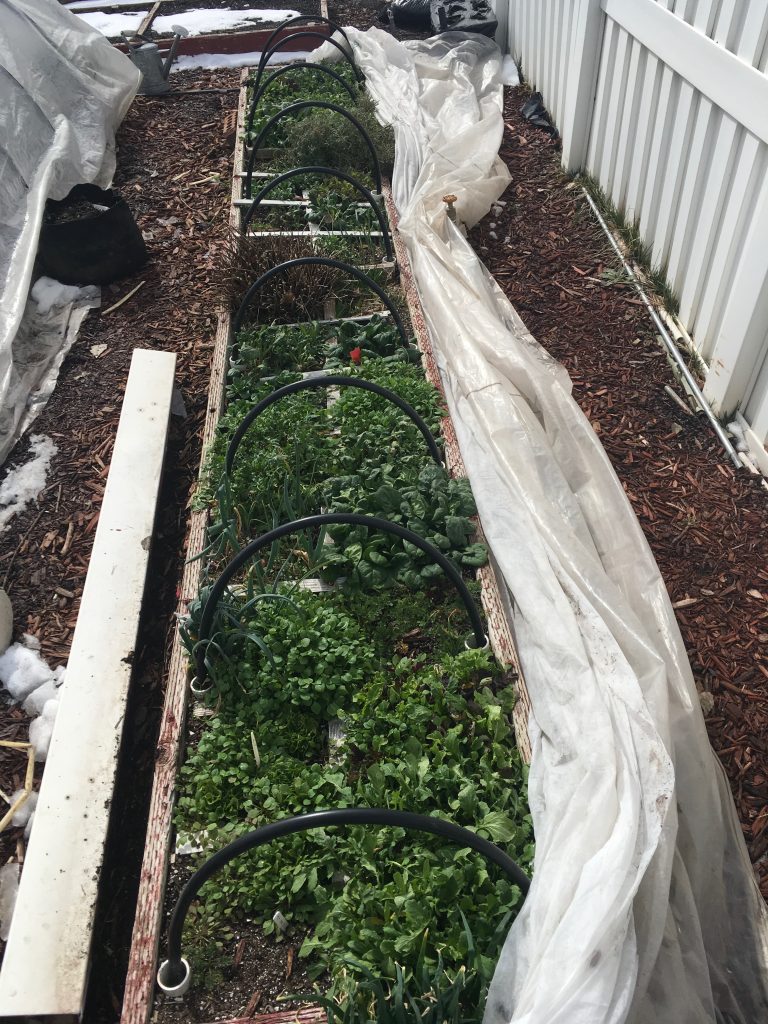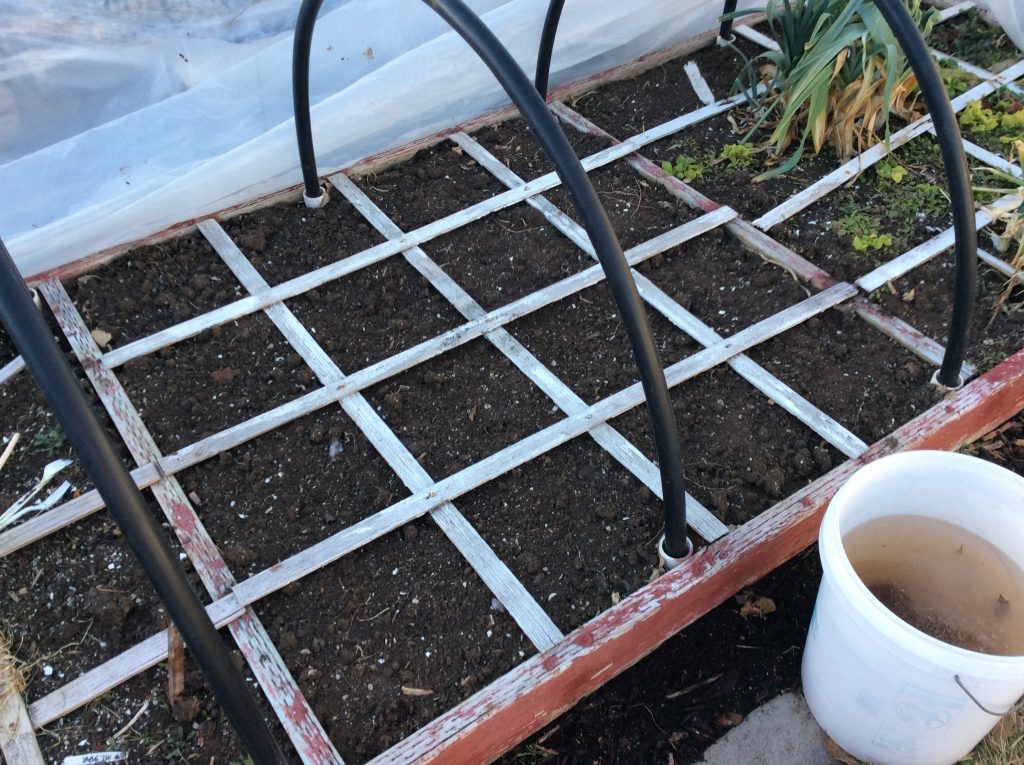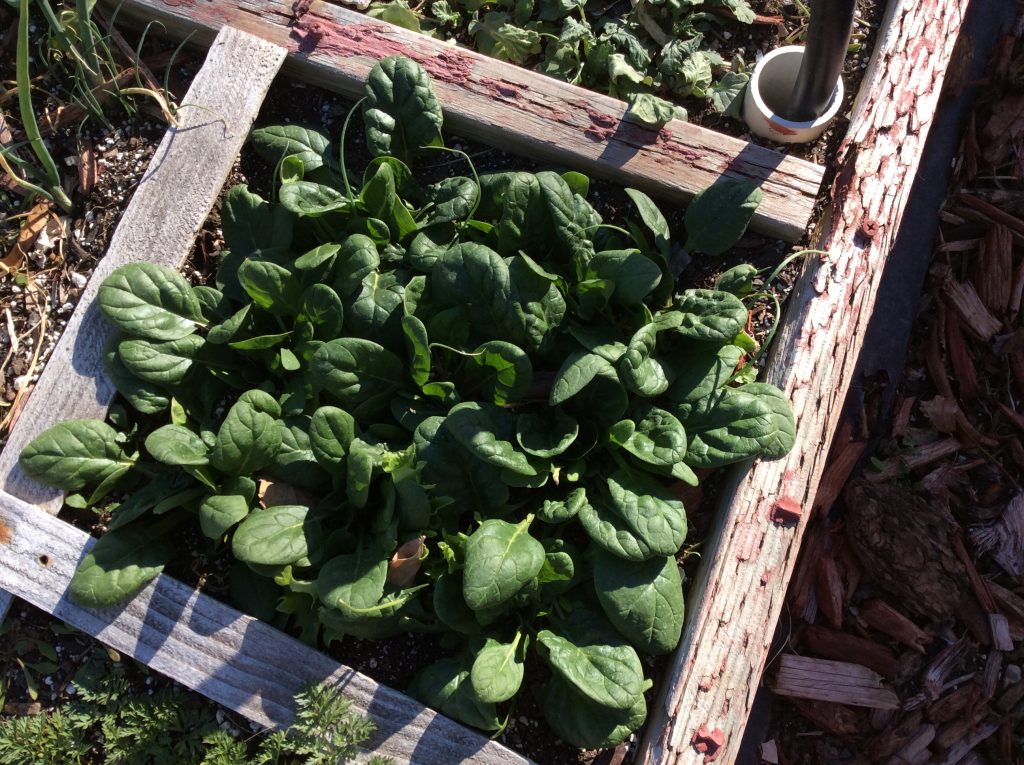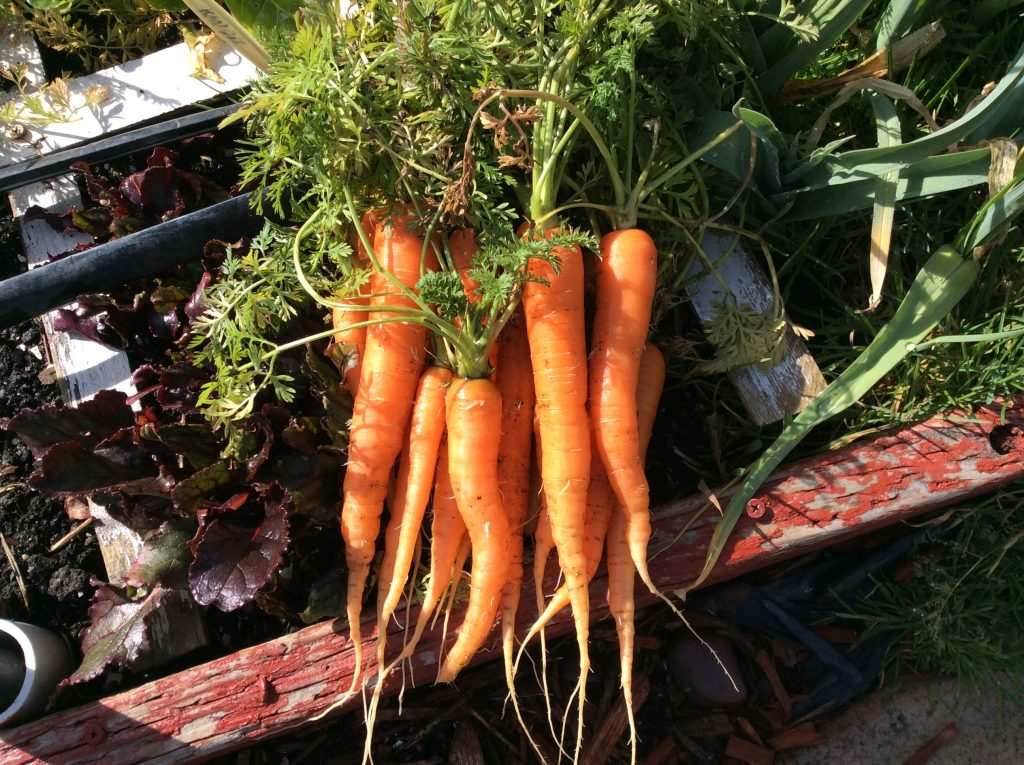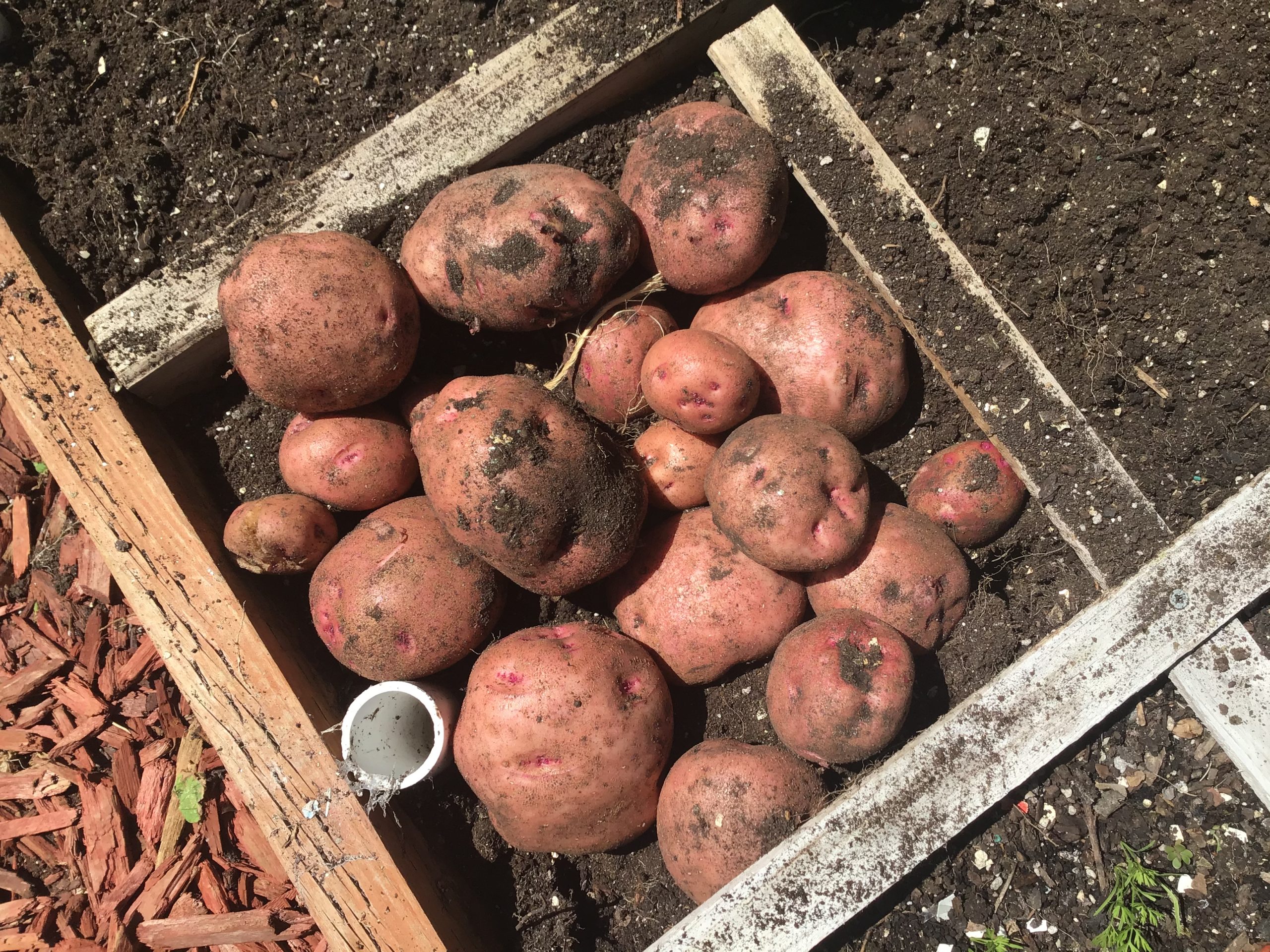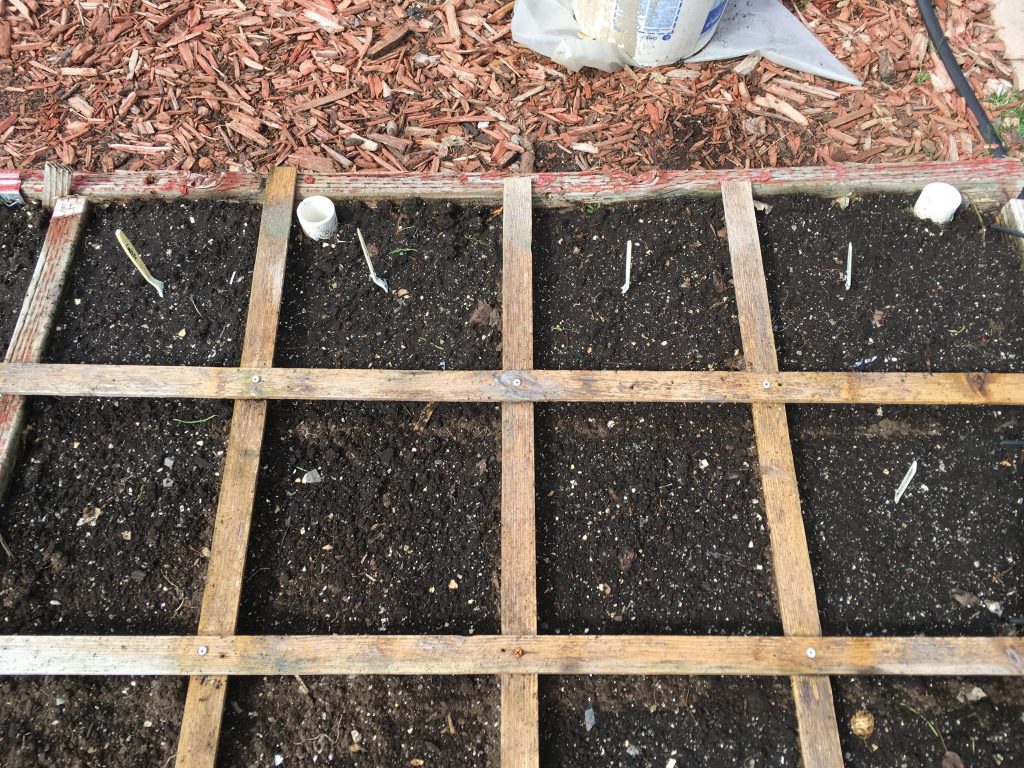 In years past I’ve planted my spring garden and put things wherever I wanted. When it became time to put in my summer vertical crops I often had to either wait for the existing squares to finish, which meant putting my tomatoes in a little late, or pull the plants which were in the square which hadn’t finished yet. For many years I’ve learned to put in the earliest crops where my vertical summer crops will grow.
In years past I’ve planted my spring garden and put things wherever I wanted. When it became time to put in my summer vertical crops I often had to either wait for the existing squares to finish, which meant putting my tomatoes in a little late, or pull the plants which were in the square which hadn’t finished yet. For many years I’ve learned to put in the earliest crops where my vertical summer crops will grow.
What do you grow right now so your squares will be ready for summer vertical crops? All the cool weather crops: lettuce, spinach, chard, endive, kohlrabi, arugula, bok choi, mizuna, kale, even radicchio. etc. Radishes can go in later because they only take about 30 days. I know there will be 7 weeks until the summer crops go in, so this leaves me with time to grow all the things that love spring. Mel always taught to think one season ahead[ois skin=”1″]

